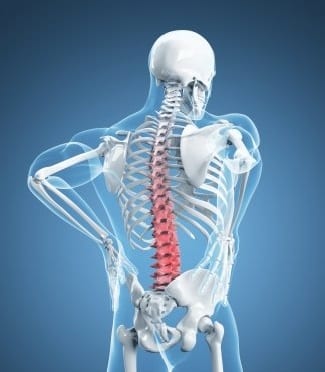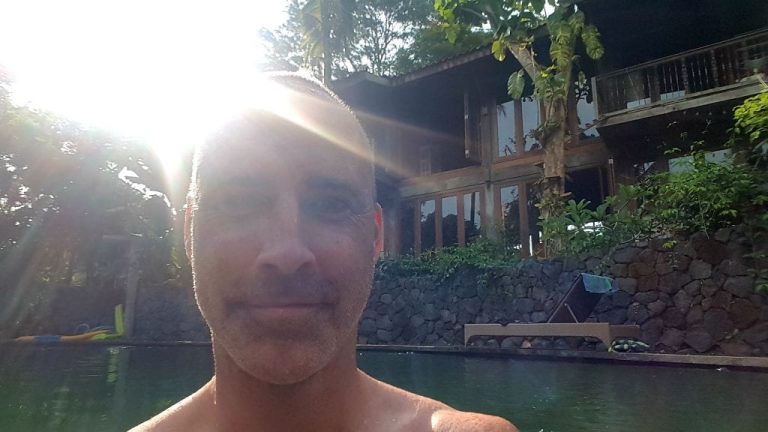Why is back pain so common?

The facts of back pain:
Back pain is especially common in the developed countries – and it seems that the more developed the country, the more back pain there is.[1][2][3]
The World Health Organisation (WHO) reported 2021 that low back pain was the most physically disabling condition in the world, so if you have low back pain then you’re a member of one of the biggest clubs on the planet! And, globally, 37% of low back pain cases are from occupational (work) situations.
The causes of acute low back pain are still relatively poorly understood in medicine and usually treated with simple painkillers, rest, heat or ice. Physiotherapy has had more success, with better long term outcomes, than painkillers and rest alone.
Chronic low back pain may have more serious reasons such as degeneration of discs, or a subluxated (shifted) vertebra.
So, how does this happen?
my hypothesis on the main causes of back pain.
I think that forward-leaning dysfunctional patterns of sitting, walking and running patterns displace lumbar pressure away from the core muscles to the vertebrae alone, leading to compression of the vertebrae and the nerves between them. Over time, the cumulative and often painful effects become more and more problematic as we age and that pressure continues to build. And then, one day… boom. You’re in pain all the time.
What are “core muscles”?
When engaged, your transversus abdominis (“TVA,” above) creates a strong, cylindrical “corset”, stabilising your ribcage on top of your hips and distributing the upwards and downwards loads of your body as you move, bend, lift and sit.
Meanwhile, in your upper abdomen (your thorax), your ribcage creates a nice, strong cylinder by itself – a fantastic launch-pad for the movements and power of your arms and head.
So your upper thorax is nice and stable with its ribs. But the lower thorax (abdomen) is soft and has not bony structure of its own, except for the spine. This makes it unstable, except for the core muscles. So, if the core muscles are not on at least a little bit, there is a lack of stability.
Having under-active core muscles can put all of the weight of your upper body through the very small area of your vertebrae, rather than distributing it efficiently through your entire abdomen.
With under-active muscles in your lower abdomen, including obliques, the force and strength of your butt, leg and back muscles all goes through your lower spine, instead of spreading that load through the whole core. Even the slightest misplaced movement can put enormous forces through the small vertebral discs, and your precious spinal cord within it.
Being slouched forwards in a seated position for long periods can switch off your core muscles, especially if you lean on your desk. Leaning forwards when walking or running does much the same thing. All this leaning forwards with under-active core muscles is TERRIBLE for our lumbar spine.
Here’s one simple trick to change your posture forever.
I believe we can change these patterns like we can change any other pattern – with a little attention and practice. Engaging our core muscles distributes our weight and the force of movement through a much wider area (about 10 times wider) and reduces the force that goes through our vertebrae.
Strengthening the muscles of the abdomen, and training the muscles on our back line to also help to bring us more upright, will balance the effects of gravity, stacking us in ways that reduce pain, inflammation and dysfunction.
Lead from your hips.
Next time you’re walking or running, imagine a piece of rope or string attached to the front of your hips, pulling you forwards. You may feel like you’re falling over backwards when you do, but take a look at yourself in a shop window as you go past – you’ll see that in fact you are bolt upright, looking alert and alive.
Find your sweet spot.
And as you’re sitting down, sit back a little and see if you can find your “sweet spot.”
Your “sweet spot” is the point where you feel almost weightless. Bring your body upright and back to the place where you feel your weight balanced from front to back. Close your eyes if you have to.
Found it? Great! Now, stay there! And if you slip back again, that’s okay – you’re training your muscles to work well again. It will take time. Just move back to balance again when you remember to. The more you do it, the more you will do it!
I can help alleviate your back pain
Manual therapy like corrective massage, physiotherapy, chiropractic, or osteopathy can give you the slingshot you need to move back in that direction. After that, body awareness and simple exercises can keep you there and continue improvements.
There are many populations in the world where back pain is non-existent. This makes me believe that it is not a natural state. Your natural state is to be pain-free, and your body is always trying to get back there. You can give it the best chance it can get by seeking professional advice, and becoming more body-aware.
If this is something you want to address in your own life, give me a call or send us an email.
Click here to read about pulled muscles, muscle strains, and ligament sprains.

